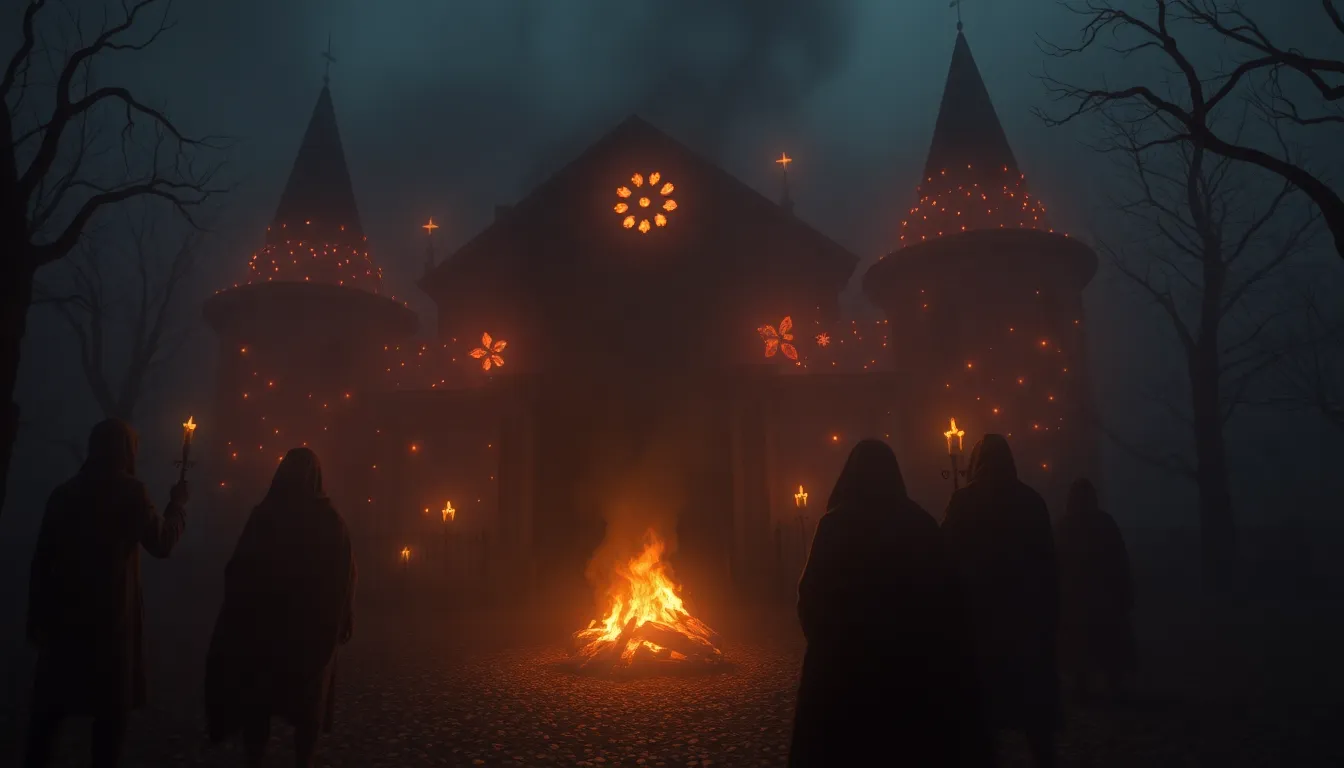Transforming Legends: The Most Unexpected Changes in Mythology
Introduction: The Evolution of Mythology
Mythology is a collection of stories that convey the beliefs, values, and traditions of a culture. These narratives often involve gods, goddesses, and supernatural beings, serving as a reflection of the human experience and the natural world. Over centuries, mythology has evolved, adapting to societal changes and cultural shifts. This article aims to explore the unexpected changes in various mythological narratives, highlighting how they have transformed to remain relevant across generations.
The Nature of Myths: Fluidity and Adaptation
Myths are not static; they are dynamic narratives that evolve with the times. Influences such as culture, society, historical events, and even technological advancements contribute to the transformation of these stories. As a result, myths often take on new meanings and interpretations that resonate with contemporary audiences.
Some examples of myths that have changed significantly over time include:
- The transformation of the hero’s journey across cultures.
- The reinterpretation of deities in response to social changes.
- The adaptation of folklore into modern storytelling mediums.
Case Study 1: The Transformation of Greek Mythology
Greek mythology is rich with tales of gods and heroes, each story originally rooted in the cultural and historical context of ancient Greece. Stories such as the Iliad and the Odyssey have been foundational in shaping Western literature. However, modern adaptations have introduced unexpected elements that diverge from their original narratives.
In contemporary literature, film, and art, we see a trend toward reimagining classic characters and stories:
- Films like Clash of the Titans and Percy Jackson & the Olympians offer new perspectives on ancient myths.
- Literature such as Madeline Miller’s Circe presents female characters in empowering roles, challenging traditional portrayals.
- Graphic novels and comic adaptations bring a visual and modern twist to ancient tales.
These adaptations often introduce unexpected elements, such as contemporary themes of identity and morality, making ancient myths accessible and relevant to today’s audiences.
Case Study 2: Norse Mythology Reimagined
Norse mythology, characterized by its pantheon of gods like Odin, Thor, and Loki, has seen a resurgence in popularity, particularly due to its portrayal in popular culture. The original narratives, steeped in themes of fate and heroism, have been transformed by modern adaptations.
Marvel’s Thor franchise, for example, presents a more relatable version of Thor, emphasizing his struggles with identity and family. Similarly, television adaptations like Vikings and American Gods explore the complexities of these characters in new contexts.
Changes in character portrayals and themes often include:
- Thor depicted as a more complex character rather than just a warrior.
- Loki as a anti-hero with relatable motivations.
- The introduction of strong female figures, such as Valkyrie, who challenge traditional gender roles.
Case Study 3: Indigenous Mythologies: Resilience and Reinvention
Indigenous mythologies around the world hold deep cultural significance, often passed down through oral traditions. However, colonialism and modernity have influenced these narratives, prompting both challenges and opportunities for revitalization.
Contemporary Indigenous authors and artists are reinterpreting their myths in response to historical trauma and cultural dislocation. This resurgence allows for a reestablishment of identity and tradition.
Examples of revitalization include:
- Books like Trail of Lightning by Rebecca Roanhorse, which weave traditional Native American myths into modern narratives.
- Art installations that incorporate mythological themes to address contemporary issues.
- Community storytelling events that revive ancient tales while adapting them to current contexts.
The Role of Feminism in Mythological Reinterpretation
Feminist perspectives have significantly altered the portrayal of female characters in mythology. Traditional narratives often depicted women in passive roles, but modern reinterpretations have sought to empower these figures.
Case studies of female characters reimagined as strong figures include:
- The reimagining of Medusa as a symbol of female rage and empowerment in works like Stone Fruit.
- Retellings of the story of Persephone that emphasize her agency and strength.
- Modern adaptations of the Amazons in comics and films that highlight their warrior spirit.
These changes have had a profound impact on societal views of gender roles, encouraging a reexamination of women’s place in both mythology and society.
Unexpected Crossovers: When Myths Collide
Syncretism in mythology occurs when different cultural myths merge, creating new narratives that reflect diverse beliefs and traditions. Globalization has facilitated these unexpected changes, leading to a rich tapestry of interconnected myths.
Notable examples of cross-pollination between mythologies include:
- The blending of Greek and Roman myths, where deities and stories were adapted and adopted.
- Modern interpretations of mythological figures in global pop culture, such as the incorporation of African deities in various media.
- Collaborative storytelling that draws on multiple mythological traditions.
The Influence of Technology and Media on Mythology
The advent of the internet and social media has reshaped how myths are told and shared. Platforms like YouTube, TikTok, and podcasts allow for the rapid dissemination of mythological stories, often with personal interpretations.
Video games, streaming platforms, and fan fiction contribute to new myth-making by:
- Creating interactive experiences that engage audiences in the narrative.
- Allowing fans to reimagine and retell myths in ways that resonate with contemporary issues.
- Encouraging community discussions and adaptations that keep myths alive.
The Future of Mythology: Trends and Predictions
Current trends in mythological retellings and adaptations suggest a continued evolution of these narratives. As societies change, so too will the myths that reflect their values and beliefs. Predictions for future mythological transformations include:
- Greater emphasis on diversity and inclusion in mythological storytelling.
- Increased use of technology in creating immersive mythological experiences.
- Continued exploration of gender dynamics and the role of marginalized voices in mythology.
In conclusion, mythology is a living, breathing entity that evolves alongside humanity. The unexpected changes in mythological narratives highlight the fluidity of these stories, showcasing their ability to adapt and resonate with audiences across time and space.



